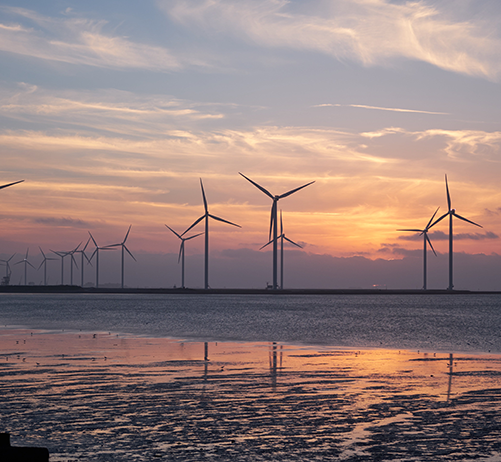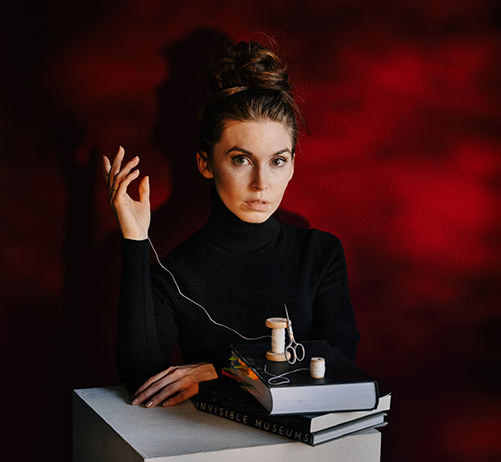IAP 2024: Expanding Horizons in Computing

In celebration of the opening of Building 45, the MIT Schwarzman College of Computing welcomed students, faculty, and visitors to its new home during the January Independent Activities Period (IAP) for Expanding Horizons in Computing — a weeklong series of bootcamps, workshops, short talks, panels, and roundtable discussions. Organized by MIT faculty, the 12 sessions in the series delved into exciting areas of computing and AI, with topics ranging from security, intelligence, and deep learning to design, sustainability, and policy.
Links to videos from the various sessions are below. Or explore the full playlist on our YouTube channel.
Day 1

Organizers
- Yael Kalai, Professor of Electrical Engineering and Computer Science
- Vinod Vaikuntanathan, Professor of Electrical Engineering and Computer Science
Short talks by faculty from the MIT Department of Electrical Engineering and Computer Science on security.
Dan Huttenlocher, Ron Rivest: Opening remarks Watch Video
Vinod Vaikuntanathan, Encrypted Computation: “Can you compute on data while it remains encrypted?” This fascinating question was first asked at MIT in 1978, resulting in the conceptualization of the notion of fully homomorphic encryption. Vaikuntanathan talks about 15 years of research building fully homomorphic encryption systems and the many challenges that lie ahead. Watch Video
Henry Corrigan-Gibbs, Private Web Search: This talk discusses the design of a new privacy-protecting search engine — one that can answer a client’s search query without ever seeing it. While the idea of a “private Google search” has been a dream of cryptographers for many years, recent developments at MIT and elsewhere have finally made it a (near) reality. Corrigan-Gibbs presents the state-of-the art in private search, along with exciting directions for future work. Watch Video
Yael Kalai, Efficient Verification of Computation on Untrusted Platforms: Efficient verification of computation is fundamental to computer science. Recently it has had growing practical significance, especially with the increasing popularity of blockchain technologies and cloud computing. In this talk, Kalai presents schemes for verifying the correctness of a computation and discusses both their practical aspects and their impact on areas such as cryptography, quantum complexity, hardness of approximation, and the complexity of finding a Nash equilibrium. Watch Video
Nickolai Zeldovich, Eliminating Bugs in Hardware Security Modules Using Formal Verification: Hardware security modules, such as USB security keys used for two-factor authentication, are a powerful approach for providing strong security even if other parts of the system are vulnerable or compromised. This approach critically depends on the hardware security modules themselves being implemented correctly and securely, but experience shows that developers make a wide range of mistakes, ranging from software bugs, to hardware issues, to subtle data leaks through timing channels. This talk presents recent research results on using formal verification to develop provably-secure implementations of hardware security modules. Watch Video

Organizer
- Adam Chlipala, Professor of Computer Science
Short talks by faculty from the MIT Department of Electrical Engineering and Computer Science on trustworthy systems.
Adam Chlipala, Correct-by-Construction Cryptographic Software: Important cryptographic algorithms have many different variations for different parameters and target hardware platforms, and conventionally, expert engineers need to reimplement an algorithm for each such combination, to get good performance. The Fiat Cryptography project provides a generator that automates that specialization work that was previously highly manual. As a bonus, the Fiat Cryptography code generator has a machine-checked mathematical proof of correctness. It has been adopted to produce parts of a number of popular open-source libraries. Watch Video
Srini Devadas, Security With Minimal Trust: An approach to building computing systems that provide integrity of computation and data privacy for users while minimizing software and hardware that needs to be trusted. Watch Video
Frans Kaashoek, Verifying Distributed Systems With Concurrent Separation Logic: Distributed systems are at the heart of cloud computing and bugs in them can lead to outages of Web sites. Unfortunately distributed systems are hard to get right because they must handle concurrency, crash recovery, replication, and reconfiguration, which interact in subtle ways. A promising approach to verifying such systems (and thereby systematically eliminating bugs) is based on concurrent separation logic, which allows components to be verified independently yet handle tricky interaction between components. Watch Video
Mengjia Yan, Principled Hardware Defenses Against Side-channel Attacks: A talk about the development of a dedicated security evaluation framework for early-stage microarchitectural defenses against speculative execution attacks. Amidst the ongoing cat-and-mouse game between hardware attacks and defenses, this framework can assist computer architects in formulating principled responses to the evolving landscape of hardware threats. Watch Video

Organizer
- Daniel Jackson, Professor of Computer Science
The MIT authors of three recent books on design talk about what design means in their domain, present examples of successful designs, and suggest prospects for the future of design in computing.
Design of Socio-Technical Systems
David Clark, Designing an Internet (MIT Press, 2018)
In a talk about the design principles of the Internet, David Clark, Senior Research Scientist at CSAIL, describes how our understanding of system requirements evolved in the first decades, and how our changing understanding influenced the evolving design. He illustrates the space of system requirements and design options by looking at some alternative proposals for how to design an Internet, and the implications of some recent design proposals. Watch Video
Design of Software Products
Daniel Jackson, The Essence of Software (Princeton University Press, 2021)
Daniel Jackson, Professor of Computer Science, explains how successful innovations in software can usually be traced to just one or two “concepts” that offer new scenarios that, with seemingly small shifts, radically change how an application is used. He gives examples from apps such as Zoom, WhatsApp, and Photoshop and also mentions how viewing apps through concepts enables use of large language models for code generation. Watch Video
Design of Programs
Gerald Jay Sussman, Software Design for Flexibility (MIT Press, 2021)
It is hard to build systems that have acceptable behavior over a larger class of situations than was anticipated by their designers. The best systems are evolvable: they can be adapted to new situations with only minor modification. How can we design systems that are flexible in this way?
We have often programmed ourselves into corners and had to expend great effort refactoring code to escape from those corners. We have now accumulated enough experience to feel that we can identify, isolate, and demonstrate strategies and techniques that we have found to be effective for building large systems that can be adapted for purposes that were not anticipated in the original design. Gerald Jay Sussman, Panasonic Professor of Electrical Engineering and Computer Science, illustrates such strategies with examples. Watch Video
Day 2

Organizers
- Dimitris Bertsimas, Associate Dean of Business Analytics, Boeing Professor of Operations Research
- Antonio Torralba, Faculty Head of Artificial Intelligence and Decision Making, Delta Electronics Professor
Artificial intelligence leveraging multiple data sources and input modalities (tabular data, computer vision, and natural language) is poised to become a viable method to deliver more accurate results and deployable pipelines across various applications. This session reviewed progress in a variety of applications, including healthcare, meteorology and education, and discussed future directions.
- Dimitris Bertsimas, Multimodal AI and the Future of Universities Watch Video
- Dylan Hadfield-Menell, Multimodal Learning and Control for Aligned Robot Systems Watch Video
- Antonio Torralba, Visual Perception and Language Models Watch Video
- Marzyeh Ghassemi, The Pulse of Ethical Machine Learning in Multimodal Health Data Watch Video
- Panel Discussion Watch Video

Organizers
- Phillip Isola, Associate Professor of Electrical Engineering and Computer Science
- Kaiming He, Associate Professor of Electrical Engineering and Computer Science
This bootcamp will introduce you to the fundamentals of deep learning. What are deep networks and how do they work? The course begins by introducing the key data structures and algorithms used by neural nets, followed by popular architectures that build upon these structures, including convolutional networks, residual networks, and transformers. The instructors look in detail at how these architectures have been applied to the field of computer vision, and give examples of applications in other areas, such as natural language processing and scientific data analysis. The course also includes a hands-on tutorial where participants can run and code simple networks in Pytorch in their browsers.
- Phillip Isola, Introduction to Deep Learning Watch Video
- Kaiming He, Learning Deep Representations Watch Video
- Tutorial Watch Video
Day 3

Organizer
- Sam Madden, Distinguished College of Computing Professor
Machine learning and generative AI promise to redefine computing in the next decade. This session explores how software and hardware systems for data centers must evolve to meet the demands of these workloads, and similarly how machine learning is redefining the way we build these software systems. In a series of short talks, each of the speakers looks at a different layer of the data center stack, including hardware, networks, operating systems, and databases, and show how new workloads and machine learning capabilities have and will continue to completely transform the way these systems work, resulting in radically different software architectures – with orders of magnitude better performance – than the designs we have used for the past several decades. The session concludes with a panel discussion that looks at common trends between these areas of the software stack and predictions about how systems will continue to evolve.
- Sam Madden, Introduction Watch Video
- Mohammad Alizadeh, Practical Neural Compression for Video Conferencing Watch Video
- Manya Ghobadi, Photonic Computing for Machine Learning Systems Watch Video
- Dina Katabi, Can a WiFi Box Tell Whether a Person Has Parkinson’s? Watch Video
- Tim Kraska, Towards Learned Data Systems Watch Video
- Sam Madden, Learned Video Querying Watch Video
- Panel Discussion Watch Video

Organizers
- Sertac Karaman, Director, Laboratory for Information and Decision Systems and Associate Professor of Aeronautics and Astronautics
- Daniela Rus, Director, Computer Science and Artificial Intelligence Laboratory and Andrew (1956) and Erna Viterbi Professor of Electrical Engineering and Computer Science
A series of short talks by MIT faculty on emerging frontiers of embodied intelligence.
Sensorimotor Learning and Reinforcement Learning:
- Pulkit Agrawal, Physical Intelligence: The Next Frontier in AI Watch Video
- Leslie Kaelbling, Doing for Robots What Nature Did for Us Watch Video
- Sasha Rakhlin, Efficient Exploration in Low-Rank MDPs Watch Video
Spatial AI:
- Luca Carlone, Spatial AI for Robots and Autonomous Vehicles Watch Video
- Vincent Sitzmann, Spatial AI: Teaching AI to See the 3D World Watch Video
Bio-Inspired Robotics:
- Sangbae Kim, Cognitive Biases Toward AI & Physical Intelligence Watch Video
Day 4

Organizers
- Jeff Grossman, Professor of Materials Science and Engineering
- Vivienne Sze, Associate Professor, Electrical Engineering and Computer Science
Climate change is one of the greatest challenges facing humanity. Machine learning can be a powerful tool in reducing greenhouse gas emissions and helping society adapt to a changing climate, ranging from smart grids, disaster management, and improved resilience, to decarbonizing industry and reimaging the built environment, there are many high-impact problems where existing gaps can be filled by machine learning, in collaboration with other fields.
On the other hand, the energy consumption and greenhouse gas emissions impact of the information and communications technology (ICT) sector is significant and dynamic. Estimates of “business as usual” future energy and emissions impacts of ICT projects are upwards of 20% of global energy use and carbon dioxide emissions by 2030. These estimates are without consideration of the ubiquitous use of deep neural networks and well before the advent of the large language model. The complexity in architecture, usage patterns, and size of the parameter space associated with generative AI and large language models comes with staggering increased energy use implications of computing both in training and inference.
This session describes efforts to leverage these tools while addressing their computational burden, to support mitigation efforts such as decarbonizing electricity systems, enhancing natural ecosystems, and achieving sustainable materials design and manufacture.
- Sara Beery, Computer Vision for Global-Scale Biodiversity Monitoring Watch Video
- Abigail Bodner, Ocean Mixed Layer Dynamics: From Physics to Climate Models and Back Again Watch Video
- Priya Donti, Tackling Climate With Machine Learning Watch Video
- Jinhua Zhao, Decarbonizing Urban Mobility: Five Areas AI Helps and Where It Does Not Watch Video
- Panel Discussion Watch Video

Photo credit: Michael George
Organizers
- Arvind Satyanarayan, Associate Professor, Electrical Engineering and Computer Science
- Graham M. Jones, Professor of Anthropology
What can the study of magic teach us about data-driven misinformation? In this one-of-a-kind workshop, attendees explore how magicians have historically used the careful construction of narrative framing devices to shift perceived facts and how these concepts can be applied to data visualization. This session begins with a presentation on visualizations, misinformation, and data literacy, followed by a discussion on framing devices used by magicians, and culminates in a hands-on workshop, where participants explore how retelling of sensationalized information morphs across groups based on data labeling.
- Arvind Satyanarayan, Associate Professor, Electrical Engineering and Computer Science, on visualizations, misinformation, and data literacy. Watch Video
- Graham M. Jones, Professor, MIT Anthropology, on what the study of magic can teach us about data-driven misinformation. Watch Video
- Jeanette Andrews, Magician and National Arts Club Artist Fellow, leads the audience in a game of telephone, exploring how the retelling of sensationalized information morphs across groups based on data labeling, and discusses how magic offers a unique structure to study framing due to its use of insidious methods in creating visual disinformation. Watch Video
- Q&A Watch Video

Organizer
- Daniel Sanchez, Professor of Electrical Engineering and Computer Science
Short talks by faculty from the MIT Department of Electrical Engineering and Computer Science on computer architecture and hardware accelerators.
- Vivienne Sze, Efficient Computing for Autonomy and Navigation Watch Video
- Christina Delimitrou: Reducing Datacenter Tax for Cloud Microservices: Acceleration and Optimizations Watch Video
- Song Han, Accelerating Large Language Models and Generative AI Watch Video
- Daniel Sanchez, A Hardware and Software Architecture to Accelerate Computation on Encrypted Data Watch Video
Day 5

Organizers
- Wojciech Matusik, Joan and Irwin M. (1957) Jacobs Professor of Electrical Engineering and Computer Science
- Caitlin Mueller, Associate Professor of Civil and Environmental Engineering; Associate Professor of Architecture
A series of short, impactful talks on computational design by early- and mid-career faculty at MIT that highlight key areas of interest and expertise.
- Josephine Carstensen, Low-Carbon Design of Buildings and Civil Infrastructure Using Tailored Topology Optimization Approaches Watch Video
- Skylar Tibbits, Programmable Materials & Self-Assembly Watch Video
- Mina Konakovic, Inverse Design with Geometry and AI Watch Video
- Q&A (pt. 1) Watch Video
- Faez Ahmed, From Data to Design: Rethinking Engineering Design With Generative Optimization Watch Video
- Stefanie Mueller, Giving Physical Objects Digital Capabilities Watch Video
- Rafael Gómez-Bombarelli, Designing Materials With Physics-Informed Machine Learning Watch Video
- Q&A (pt. 2) Watch Video

Organizers
- Dan Huttenlocher, Dean, MIT Schwarzman College of Computing
- Asu Ozdaglar, Deputy Dean of Academics, MIT Schwarzman College of Computing and Head, Department of Electrical Engineering and Computer Science
- David Goldston, Director, MIT Washington Office
This workshop considers key questions about how to effectively govern the use of AI. The discussion builds on recently-released policy briefs aimed at delivering technically-informed recommendations on AI policy, produced by several MIT faculty as part of an initiative led by the MIT Schwarzman College of Computing and MIT Washington Office.
The aim of this discussion-oriented workshop is the continued development of practical, technically informed AI policy recommendations. The first part of the workshop was dedicated to a discussion of the policy brief on an overarching AI governance framework, as well as issues particular to large-scale generative models. The second half dived deeper on issues such as auditing, data ownership, and other topics.